Pallet Changing Machine: How Do Coating Shops Swap Paint Pallets Efficiently?
Your coating shop is a hub of activity. Every day, heavy pallets of paint cans, finished parts, and raw materials move through your facility. But there's a hidden problem that quietly drains your profits and slows down your entire operation: swapping pallets. Manually transferring a full load from a wooden pallet to a plastic one, or vice-versa, is slow, physically demanding, and risky. You've seen workers struggle, witnessed damaged goods from accidental drops, and felt the frustration of production delays caused by this seemingly simple task. This bottleneck costs you more than just time; it costs you money and puts your team at risk.
Coating shops swap paint pallets efficiently by using a pallet changing machine. This equipment automates the process of transferring a full load of goods from one pallet to another. It typically works by either clamping and inverting the entire load or by gently pushing the product stack onto a new pallet. This eliminates manual labor, significantly speeds up the process, prevents product damage, and improves worker safety.
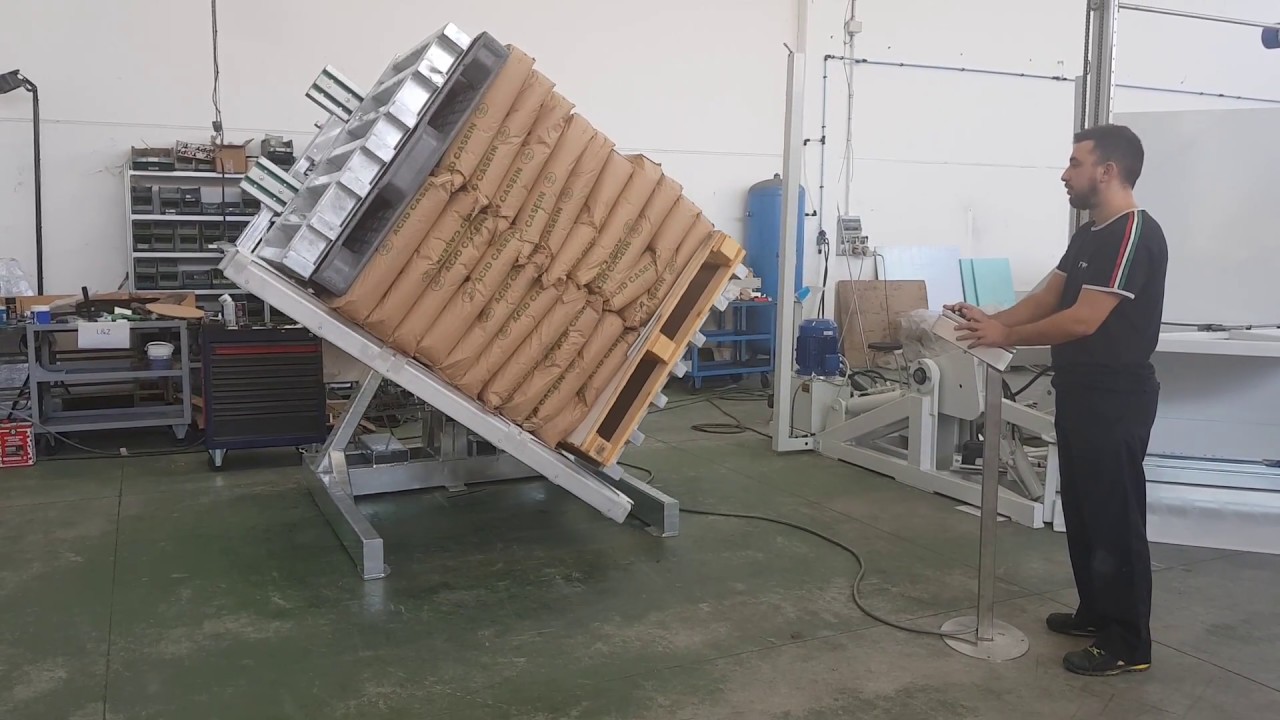
I have spent my entire career in and around factories. I started on the floor, just like many of your team members, and eventually built my own packing machine company, SHJLPACK. I have walked through hundreds of plants, from small workshops to massive steel mills. And I can tell you that the most successful ones, the ones that grow consistently, are masters of efficiency. They identify and eliminate bottlenecks that others ignore. The process of changing pallets is one of those classic hidden problems. Let's explore how solving this one challenge can have a huge impact on your entire coating operation.
You see a pallet of finished coated parts ready to be shipped. Your customer requires it on a plastic pallet, but it's currently on an in-house wooden one. What happens next? Two or three workers surround the pallet, attempting to lift the stack by hand while another person slides the old pallet out and a new one in. This process seems straightforward, but it is filled with hidden dangers and costs. A single slip could lead to a serious back injury, a crushed foot, or a cascade of damaged products hitting the floor. The financial and operational fallout from these incidents can be significant, disrupting schedules and impacting your bottom line.
Manual pallet handling is a hidden risk because it directly exposes your business to high costs from worker injuries, product damage, and operational inefficiencies. Each manual transfer is an uncontrolled event with a high potential for accidents. These accidents lead to workers' compensation claims, lost workdays, and expensive product write-offs, creating unpredictable financial liabilities for the coating shop.
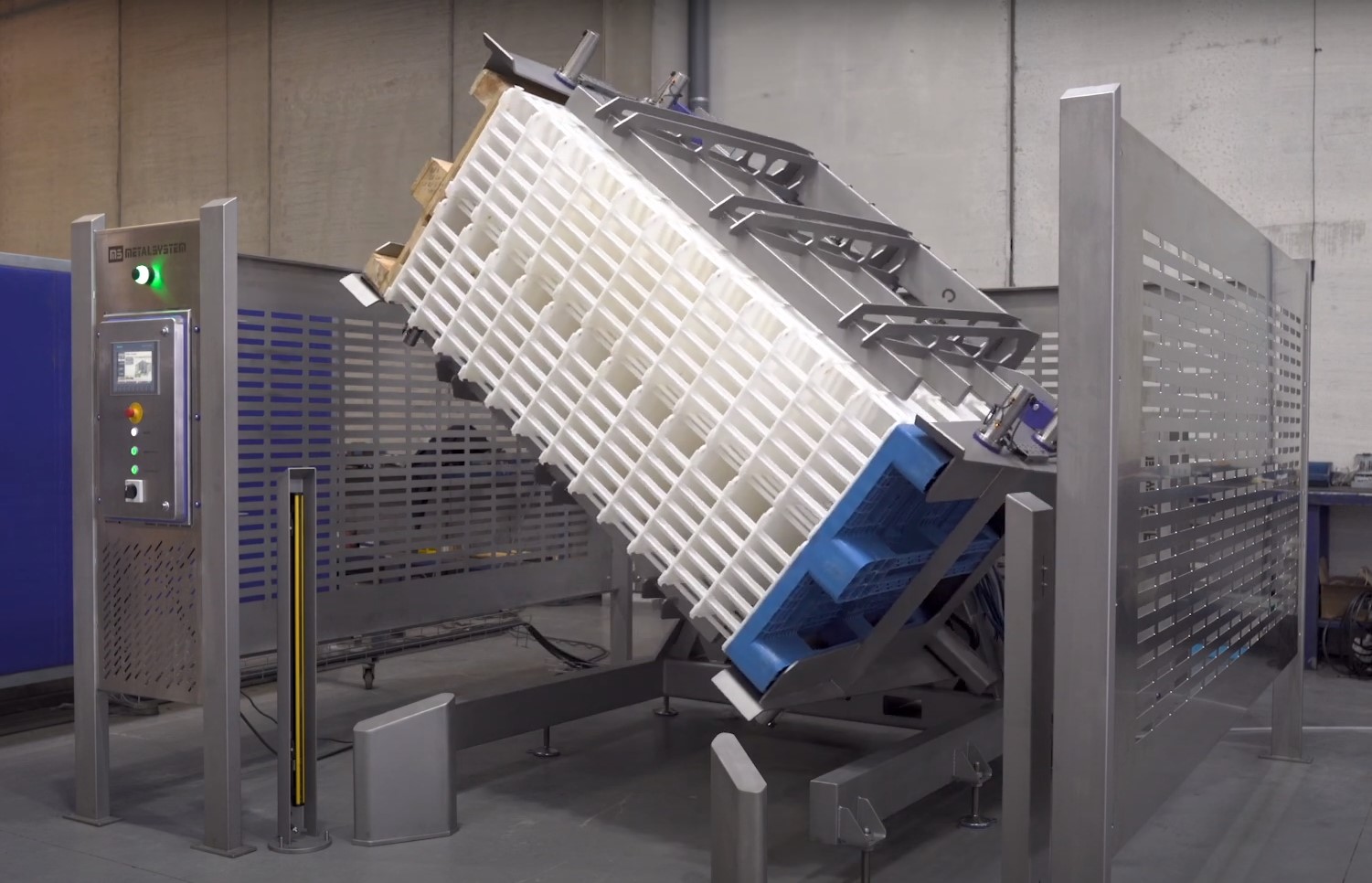
Diving Deeper into the Risks
In my early days as an engineer, I was tasked with analyzing process flow in a large manufacturing plant. The plant manager, a man much like Javier, was focused on big-picture items like machine uptime and energy costs. He completely overlooked the shipping department, where pallet swapping was done by hand. He saw it as a minor task. I spent a week observing that area and the data I collected shocked him. Let's break down the risks I found, which I see in coating shops and factories everywhere.
The Three Core Dangers of Manual Handling
-
Worker Injury and Liability: Manually lifting and shifting heavy, unstable loads is an ergonomic nightmare. The most common injuries are to the back, shoulders, and knees. These are not minor issues. A single serious back injury can lead to months of lost work, high medical bills, and a significant increase in your insurance premiums. In some cases, it can even lead to litigation. You are not just paying for the worker's absence; you are paying for a long-term liability that could have been easily avoided. The cost of one serious injury can often exceed the cost of the equipment designed to prevent it.
-
Product Damage and Waste: When your team handles a stack of freshly coated parts or cans of expensive paint, any instability can be catastrophic. A dropped stack means more than just a mess to clean up. It means damaged products that must be reworked or scrapped. It means wasted materials, wasted labor from the initial production, and wasted time. I once saw an entire pallet of custom-coated automotive parts worth thousands of dollars get ruined because a wooden pallet splintered during a manual transfer. The loss from that single event would have paid for a pallet changer.
-
Operational Inefficiency and Bottlenecks: Manual pallet swapping is slow. A process that could take less than a minute with a machine can take 10-15 minutes for a team of workers. Now, multiply that by the number of pallets you swap each day. The lost time adds up quickly. This manual process becomes a major bottleneck. Trucks are left waiting to be loaded, production lines are stalled waiting for materials, and your overall plant throughput decreases. You have invested in high-speed coating lines and efficient curing ovens, only to have the final step in the process slow everything down.
Here is a simple breakdown of the real costs you might be ignoring:
| Risk Category | Direct Costs | Indirect Costs |
|---|---|---|
| Worker Safety | Medical Bills, Insurance Premiums, Legal Fees | Lost Productivity, Low Team Morale, Hiring/Training Replacements |
| Product Integrity | Scrapped Material Costs, Rework Labor Costs | Damaged Customer Reputation, Rush Shipment Fees, Lost Orders |
| Operational Flow | Overtime Pay for Delayed Staff, Detention Fees for Trucks | Reduced Plant Capacity, Inaccurate Production Forecasting |
For a leader like Javier, who scrutinizes every aspect of his operation for stability and ROI, these hidden risks are unacceptable. The manual method is a relic of the past. It introduces unpredictability into a system that demands precision and control.
How does a pallet changing machine directly boost operational efficiency?
Imagine your production line is running perfectly. Coated products are coming off the line at a steady pace. But then, they start to pile up. The shipping department can't keep up because they are slowly and carefully swapping pallets by hand. This delay ripples backward, forcing you to slow down or even stop your primary production line. You are losing money every minute the line is idle. The problem isn't your coating process; it's the manual handling that follows.
A pallet changing machine directly boosts operational efficiency by transforming a slow, manual, multi-person task into a fast, automated, one-person job. It completes a pallet swap in about 60 seconds, drastically reducing the time a load spends in transit. This speed eliminates bottlenecks in shipping and receiving, which allows production lines to run continuously at their optimal speed, increasing overall plant throughput and maximizing the use of your core assets.
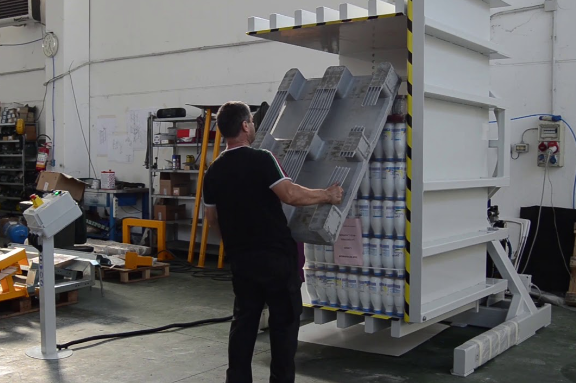
Diving Deeper into Efficiency Gains
When I work with clients, I don't just sell them a machine. My goal, as stated in SHJLPACK's mission, is to provide a total solution. That means helping them understand the full impact of their investment. A pallet changer isn't just about swapping pallets faster. It's about optimizing your entire workflow. Let's look at the specific ways it achieves this, which directly align with a goal like raising equipment uptime to 95%.
From Minutes to Seconds: The Throughput Revolution
The most obvious benefit is speed. A manual swap can take anywhere from 5 to 15 minutes and requires two or three employees. A pallet changer, operated by a single employee, finishes the same task in under a minute.
Let's do some simple math. Assume you swap 50 pallets per day.
- Manual Method: 50 pallets x 10 minutes/pallet = 500 minutes (8.3 hours). This requires the full attention of at least two people, so that's 16.6 man-hours.
- Machine Method: 50 pallets x 1 minute/pallet = 50 minutes (0.83 hours). This requires one operator.
The machine frees up over 15 man-hours every single day. That is labor you can reallocate to more value-added tasks instead of pure material handling. This massive time saving breaks the bottleneck. Your shipping and receiving docks are no longer congested. Trucks can be loaded and unloaded faster, reducing driver wait times and potential detention fees. Most importantly, your valuable production lines can run without interruption.
System Integration and Workflow Automation
Modern pallet changers are not just standalone units. They are designed to be integrated into a larger automated system. This is crucial for a business owner like Javier, who is focused on digitalization and creating a "smart factory."
Here's how it integrates:
- Conveyor Systems: A pallet changer can be placed in-line with roller or chain conveyors. A pallet can move from the production line, onto the changer, and then directly to the stretch wrapper or loading dock without ever being touched by a forklift.
- MES and WMS Integration: The machine's operation can be tied to your Manufacturing Execution System (MES) or Warehouse Management System (WMS). The system can automatically direct a pallet to be swapped based on its final destination or customer requirements. This removes human decision-making and potential errors.
- Data Collection: The machine can log data on every cycle. You can track how many pallets are swapped, at what times, and identify peak periods. This data is valuable for a leader aiming for comprehensive production visualization.
This level of automation turns your pallet swapping station from a liability into a strategic asset. It becomes a predictable, reliable, and efficient part of your overall process, contributing directly to the goal of high equipment utilization. It ensures that the millions you've invested in your core production equipment are not being held back by an outdated manual process at the very end of the line.
What key features should a plant owner look for in a pallet changer?
You have decided that a pallet changing machine is the right solution for your coating shop. But when you start looking, you find many different types and models. There are inverters, pushers, single-clamp systems, and dual-clamp systems. Choosing the wrong one can be a costly mistake. An undersized machine might damage your products, while an overly complex one could lead to maintenance headaches and a poor return on investment. You need a machine that fits your specific needs, not a one-size-fits-all solution.
A plant owner should look for key features like load capacity, clamping pressure control, construction quality, and ease of maintenance. The machine must be able to handle your heaviest and most delicate loads safely. Adjustable clamping pressure is critical for preventing damage to sensitive products like cans of paint. A robust, simple design built with high-quality components ensures long-term reliability and minimizes downtime, which is essential for any serious production environment.
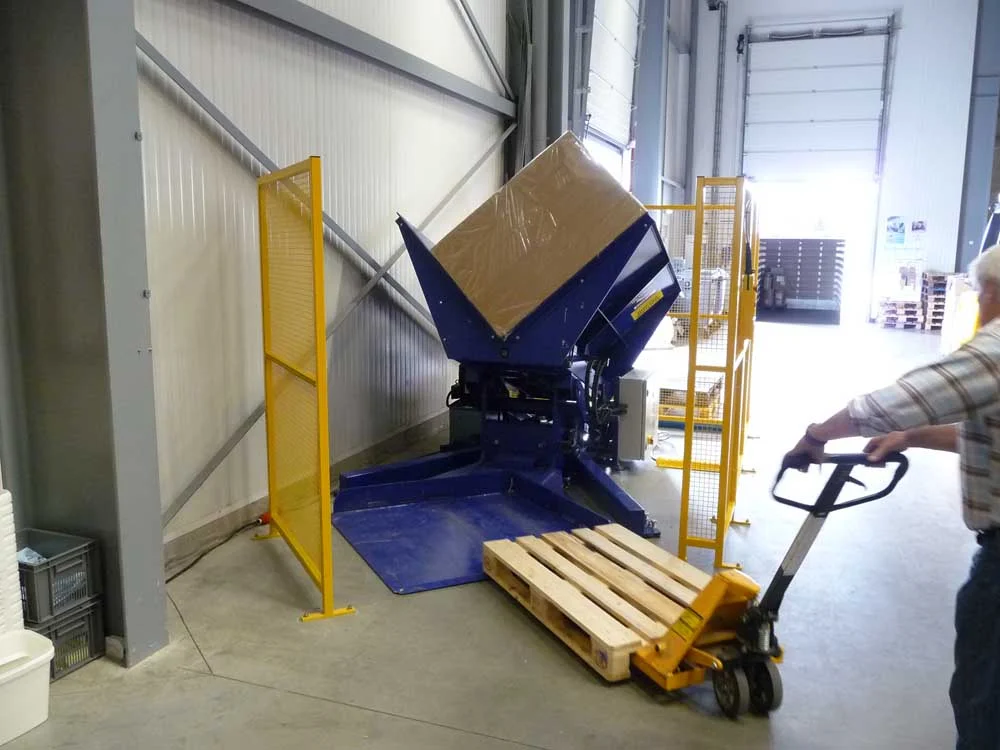
Diving Deeper into Machine Selection
As an engineer who has designed and built these machines, I can tell you that the details matter. A smart business leader like Javier knows that an equipment purchase is a long-term commitment. You are not just buying a machine; you are buying a capability. Let's break down the critical features you must analyze to ensure you are making a wise investment.
Core Mechanical and Control Features
Your first consideration should always be the product you are handling. The machine must be matched to your load characteristics.
-
Load Type and Capacity: Are you handling uniform boxes, pails of paint, or unstable sacks? A pallet inverter that rotates the load 180 degrees is great for stable, boxed goods. For more sensitive or unstable loads, a pallet pusher or transfer system that slides the product stack from one pallet to another might be a better choice. Always check the maximum weight capacity and ensure it exceeds your heaviest pallet load by a safe margin, typically 20-25%.
-
Clamping System and Pressure Control: This is perhaps the most critical feature for a coating shop. You handle both durable raw materials and delicate finished goods.
- Single vs. Dual Clamps: A single top clamp is simple, but a dual-clamping system (top and side) provides much better stability for taller or less uniform loads.
- Adjustable Pressure: The ability to adjust the clamping pressure is non-negotiable. You need low pressure for a pallet of paint cans to avoid crushing them, but higher pressure for a heavy, stable load of raw steel. Look for a system with a simple, reliable hydraulic or pneumatic control that operators can set easily and accurately.
-
Construction and Component Quality: I always tell my clients to look at the "bones" of a machine.
- Steel Gauge: Look for a heavy-duty steel frame. Thicker steel means less vibration and a longer service life.
- Welds: Inspect the quality of the welds. Clean, consistent welds indicate good craftsmanship.
- Components: Ask who manufactures the key components like the hydraulic power pack, motors, and electrical controls. Using reputable, internationally recognized brands (like Siemens, Schneider, or Parker) means that spare parts will be easy to find and the system will be more reliable. This is a crucial point for someone managing aging equipment and wanting to ensure future stability.
This table compares two common types of pallet changers:
| Feature | Pallet Inverter (180° Rotator) | Pallet Pusher (Transfer System) |
|---|---|---|
| Best For | Stable, robust loads (e.g., boxed goods, solid items) | Sensitive, fragile, or unstable loads (e.g., pails, bags, glass) |
| Mechanism | Clamps the load, rotates 180°, swaps pallet, rotates back | Pushes the product stack smoothly from the old pallet to the new |
| Speed | Very fast (typically under 60 seconds) | Slightly slower (60-90 seconds) |
| Footprint | Generally more compact | Can be longer to accommodate the push mechanism |
| Key Advantage | Simplicity and speed for suitable products | Utmost product protection during transfer |
Choosing the right features is about risk management. By investing in a machine with adjustable controls, robust construction, and a mechanism suited to your products, you are not just buying efficiency; you are buying peace of mind.
How can you justify the investment in a pallet changing machine?
As the owner of a steel mill or a large coating shop, you analyze every major capital expenditure. You need to see a clear path to a positive return on investment (ROI). A pallet changing machine is not a small purchase, and you need to prove to yourself and your stakeholders that it will pay for itself and contribute to your overall financial goals, like reducing operating costs by 8%. Simply wanting a safer or faster process is not enough; you need the numbers to back it up.
You can justify the investment in a pallet changing machine by calculating its ROI based on concrete cost savings in labor, reduced product damage, and eliminated injury-related expenses. By quantifying these savings and comparing them to the machine's purchase price, you can demonstrate a clear payback period, often within 12 to 24 months. The investment is justified not as an expense, but as a strategic tool for cost reduction and profit enhancement.
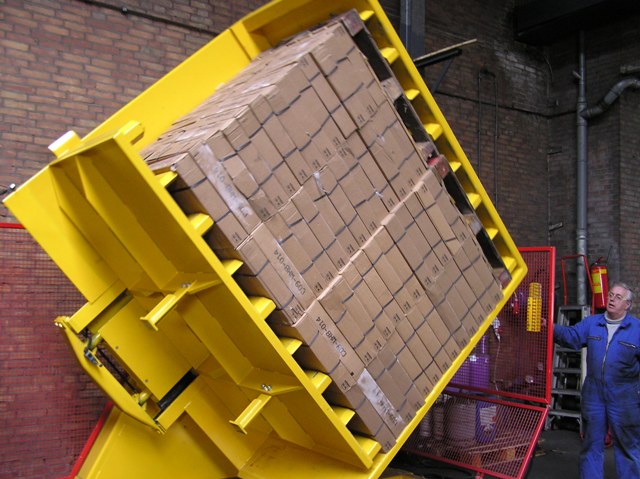
Diving Deeper into the ROI Calculation
I've helped many clients, from family-owned shops to large industrial plants like Javier's, build the business case for this equipment. The key is to move beyond abstract benefits and focus on tangible, measurable financial data. Let's walk through how to build a simple but powerful ROI analysis.
Step 1: Quantify Your Current Costs (The "Before" Picture)
First, you need to know the true cost of your current manual process. Be honest and thorough.
- Labor Costs: Calculate the total hours spent on manual pallet swapping per year.
- (Number of Workers) x (Avg. Time per Swap in hours) x (Swaps per Day) x (Workdays per Year) x (Hourly Wage + Benefits) = Annual Labor Cost
- Product Damage Costs: Track the value of products damaged or scrapped due to handling errors over the last 12 months. Don't forget the cost of rework.
- (Value of Damaged Goods) + (Cost of Rework Labor) = Annual Damage Cost
- Injury and Insurance Costs: What did you spend on injury-related claims? It can be hard to get an exact number, but even a conservative estimate based on industry averages or your insurance advisor's input is better than zero. A single claim can easily cost $20,000-$40,000.
Step 2: Estimate Your Future Savings (The "After" Picture)
Now, project the costs with a pallet changer in place.
- New Labor Costs: The task now only requires one operator for about a minute per swap. Recalculate the annual labor cost using the new, lower numbers. The difference is your labor savings.
- Reduced Damage: A pallet changer virtually eliminates damage from dropping. You can conservatively estimate a 95-99% reduction in your Annual Damage Cost.
- Safety Savings: The risk of ergonomic injury is nearly eliminated. This reduces your exposure to claims and can positively impact your insurance premiums over time.
Step 3: Calculate the Payback Period
The payback period is the time it takes for the savings to equal the initial investment.
Payback Period (in years) = (Total Machine Cost) / (Total Annual Savings)
Let's use a sample calculation:
| Cost/Saving Category | Annual Cost (Manual) | Annual Cost (Machine) | Annual Savings |
|---|---|---|---|
| Labor (2 workers, 10min/swap, 50 swaps/day) | $60,000 | $5,000 (1 worker, 1min/swap) | $55,000 |
| Product Damage | $15,000 | $500 (est. 97% reduction) | $14,500 |
| Injury Risk (Potential Cost Avoidance) | $10,000 (Conservative est.) | $0 | $10,000 |
| Total | $85,000 | $5,500 | $79,500 |
If the pallet changing machine costs, for example, $90,000 (including installation and training), the calculation is:
Payback Period = $90,000 / $79,500 = 1.13 years
A payback period of just over a year is an extremely compelling financial argument. For a forward-thinking leader like Javier, this is not an expense. It is a high-return investment that directly addresses his core goals of reducing operational costs, increasing stability, and improving profitability. It is a clear, data-driven decision.
Conclusion
Automating your pallet swapping process is a strategic move that delivers immediate returns in safety, efficiency, and cost reduction, strengthening your entire operation from the ground up.


